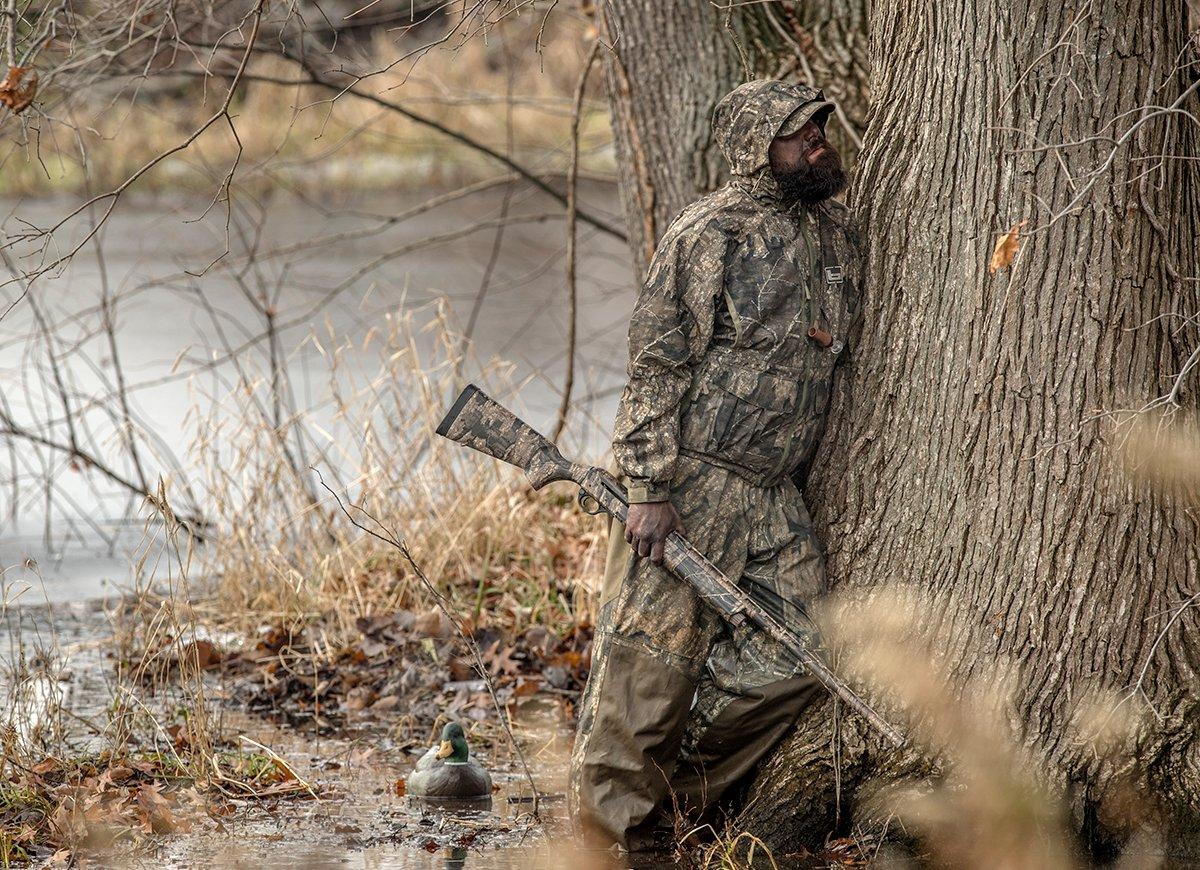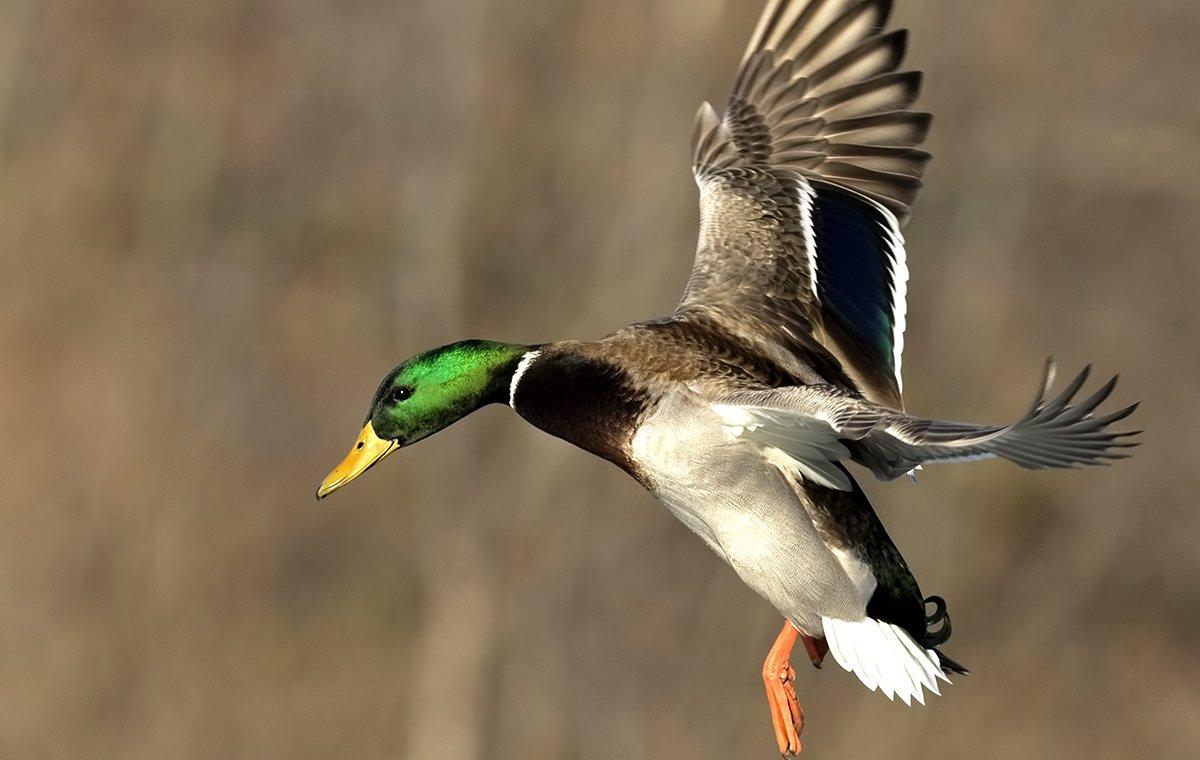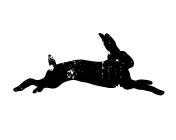Some insist the good old days are gone, but others say rumors of a death knell have been overblown

For uncountable autumns and winters, ducks and the folks who pursue them have flocked to the flooded timber, rice impoundments, coastal wetlands and river deltas of the South. The experience is a lifestyle for many and a bucket-list trip for others, but everyone seeks the same goal: to experience the stunning spectacle of North America's waterfowl migration at the proverbial end of the funnel.
But during the past several years — decades, perhaps — trouble has arisen in pits and blinds throughout the lower Mississippi and Atlantic flyways, especially when guns are silent and straps are light. Many veteran hunters believe ducks have changed their seasonal patterns and don't frequent traditional Southern migration corridors or wintering areas as much nowadays because of increasingly warm weather or new food sources farther north. Others maintain that exploding hunting pressure or even mismanagement have sullied the sport. And a few disgruntled waterfowlers might even say that the grand tradition of Southern duck hunting has simply gone to hell.
Trying to separate facts from opinions about this perceived decline often spawns more debate, leaving people scratching their heads about the true extent of the shift. Still, many wonder if Southern duck hunting has really taken a sour, perhaps dangerous turn — and if so, whether hunters and managers can find solutions before it's too late.
A Hunter's Perspective
Pat Pitt, founder of the tradition-rich L'Anguille Lounge Duck Club in northeastern Arkansas, started duck hunting in 1963 and has seen many twists and turns in the five-plus decades since. When asked about the extent of the change in Southern duck hunting, he doesn't mince words: It's drastic.
Pitt's hunting records back up his contention, pointing to a significant downturn in his group's duck harvests, especially mallards.
On opening day, we used to have all the mallards we wanted down here, Pitt said. One opening day, we had a 22-person mallard limit with only one hen — and it was collateral damage. We normally average 2,200 to 2,800 ducks per season, and we just barely broke 1,000 last year. And we hunt them hard, too. We base our season on the number of mallards we kill. Last year, we killed more specks than mallards.
Like many folks, Pitt believes weather changes have greatly influenced migratory patterns. During winters without snow cover north of St. Louis, Missouri, or the Missouri Bootheel, many ducks — especially mallards — don't push south to Pitt's area, congregating instead at large reservoirs to the north and feeding in harvested ag fields.
It greatly affects the southern migration now, he said. And ducks are creatures of habit, but they are adapting to the fact that where they used to go to eat at this McDonald's is closed. So why fly by 200 McDonald's to get to this one down here? So they stop, and they're there. Nothing is pushing them.
However, Pitt also believes many other factors have contributed to the downward trend, including the internet, spinning-wing decoys, intense hunting pressure and the considerable economic impact of duck hunting in the South.
The dollar and the chest thumping are hurting duck hunting more than anything I've seen, he said. My little grandson is 6, and he loves duck hunting for the right reasons. He loves to see the birds, loves to see the dog work, and loves to see the drakes killed and the hens not killed. That's the same way I taught my son. And I'm sad because there's not a quick fix. I'm sad because my grandson is not going to see what I've seen.
What Science Says
Michael Schummer, senior research associate and Roosevelt waterfowl ecologist with the State University of New York College of Environmental Sciences and Forestry, an institution that focuses on the environment and natural resources, is intimately familiar with the complaints and conspiracy theories involving the decline of Southern duck hunting. As you'd expect from a scientist, he said the situation involves multiple intertwined factors.
Schummer often hears that substantially increased corn acreage in the northern Mississippi Flyway, especially in the Great Lakes region and Upper Midwest, is the No. 1 culprit behind changing migration patterns. However, in his Jan. 4, 2021, YouTube episode of the Weekly Duck Migration Forecast, Schummer said it's not that simple, pointing out that as corn has boomed, rice acreage in coastal Louisiana and Texas decreased by about 50% from the 1980s through the 2010s. Missouri's rice production increased during that period, adding more food north of historical waterfowl wintering areas. Further, substantial wetlands losses and river-system management in the South and other regions have altered many natural processes.
And climate change — which Schummer adamantly said is scientifically proven and not a hoax — is also playing a role. In fact, several scientific papers suggest that ducks are not migrating to Southern latitudes as they once did, and that the situation will likely get worse. Schummer said changes in the winter severity index (temperature and snow cover) from 1979 through 2013 indicated the available area for ducks to winter increased annually by 2,866 square kilometers, adding about 96,798 square kilometers to the areas in which ducks can stay and feed at northern latitudes. When factoring in duck-use days, that means about 1.65 million additional ducks can feed each day at northern latitudes for the 92-day period of November through January. And that figure increases to as many as 3.2 million additional ducks during mild years. All that weaves together a complex scenario.
The rumors of the death of Southern duck hunting, if we look at the data, have been greatly exaggerated.
— Luke Naylor, Arkansas Game & Fish Commision
Birds have more food at northern latitudes because of just corn acreage in general, Schummer said. It's not getting cold enough to make them come south. Rice acres have declined in coastal Louisiana and Texas, and you have (fewer) wetlands than you used to. These birds follow the food, and they follow the resources.
Hunters, meanwhile, might not have adapted.
No single duck hunter should ever sit against the same tree for 100 years and expect to see the same thing for 100 years, because the ducks ain't gonna do it, Schummer said. They're going to follow the food. So I think as duck hunters, I think it's our job to follow the ducks.
But just when observers think research has solved the puzzle, other data presents inconvenient truths. Just ask Luke Naylor, waterfowl program coordinator with the Arkansas Game and Fish Commission.
The rumors of the death of Southern duck hunting, if we look at the data, have been greatly exaggerated, he said. It's hard to find any data-driven indicators that duck hunting has or is declining in Arkansas.
For example, Naylor said the state's Trends in Arkansas Duck Populations, Hunter Activity and Harvest report shows that Arkansas' mallard harvest remains very close to the long-term (1961 through 2000) average, although it dipped below that slightly during 2020-21. Total duck harvest during that period remains higher than the long-term average. Both figures saw significant spikes during 1999 and 2000, and then again in 2011 and 2012. And Arkansas' seasonal mallard harvest compared with the rest of the Mississippi Flyway and United States from 1999 through 2020 has actually increased.
Further, Arkansas has remained among the top six states for total duck harvest the past several years, and its seasonal duck harvest per hunter from 2016 through 2020 was about 19.4, ranking it second in the Mississippi Flyway, behind Louisiana.
In addition, the state's recent midwinter (late January) mallard estimates are very similar to those from the late 1980s. The 2015 and 2018 estimates were higher than long-term averages, and the 2019 through 2021 estimates were slightly lower.
If duck hunting is so bad, then why in the past seven years has Arkansas seen the highest state waterfowl stamp sales in history? Naylor said. I know waterfowl hunters are a tough group of people and can persist through a lot, but I don't think we're that big of gluttons for punishment. Something is driving people to continue to hunt here.
Naylor said changes in modern hunting approaches might have something to do with perceived declines.
A lot of folks are highly mobile these days, and info spreads fast, he said. There's opportunity for people to learn where ducks are and where ducks aren't and have the means and ability to go hunt those locations fairly quickly in a lot of cases. But another group that has a lot less mobility and is more connected to a particular hunting location … could very well be experiencing poorer success and seeing fewer ducks at those locations.
Further, Naylor said studies from 1980 through 2003 indicate that the overall geographical range of mallard harvest distribution in Arkansas might be broadening, spreading out from the traditional epicenter of the delta. He hopes further studies might reveal more information.
Although data might seemingly refute many complaints and contentions from waterfowlers, Naylor emphasized that the AGFC will continue to listen to hunters and consider their input.
It can sound like we're just ignoring this because we don't want to hear people gripe, but that's just not the case, he said. We always have to fall back on the available data. Hey, we're paying attention. We're not just sitting back idly by and hoping nothing changes.

Going Forward
Jared Mophett, head guide and habitat manager at Honey Brake Lodge in Catahoula Parish, Louisiana, has hunted ducks for 41 years and guided for 29, and like many, he acknowledged that duck hunting in his area has changed. However, he also pointed to the many enduring positives of modern Southern waterfowling.
We definitely kill fewer mallards than we used to, but that's when you have to be smart enough as a manager to manage the ducks you're going to get, like pintails, teal, and gadwalls, Mophett said. Yes, the mallard numbers have declined over 10 years as far as numbers go, but if we have five or six people in a duck blind here, we might kill six to eight different species. That's what we're known for, and we manage for all of it.
And he pointed out that duck seasons, like everything in life, run in cycles, and perspective plays a huge role in the way people approach and enjoy the current duck situation.
It's definitely changing, but you just have to make the best of what you have, and enjoy it and have a good time, Mophett said. There are still a lot of great days. Duck hunters are going to say, 'Remember back in the good old days?' But to me, we're in the good old days right now. We're here, we're breathing, and we're doing what we do and enjoying it. Enjoy the good days.
Click here for more Realtree waterfowl hunting content. And check us out on Facebook.











































